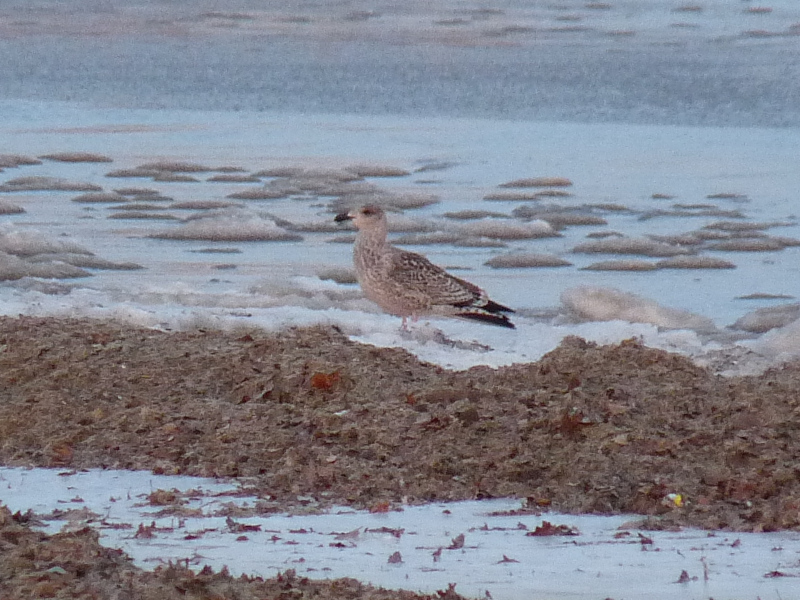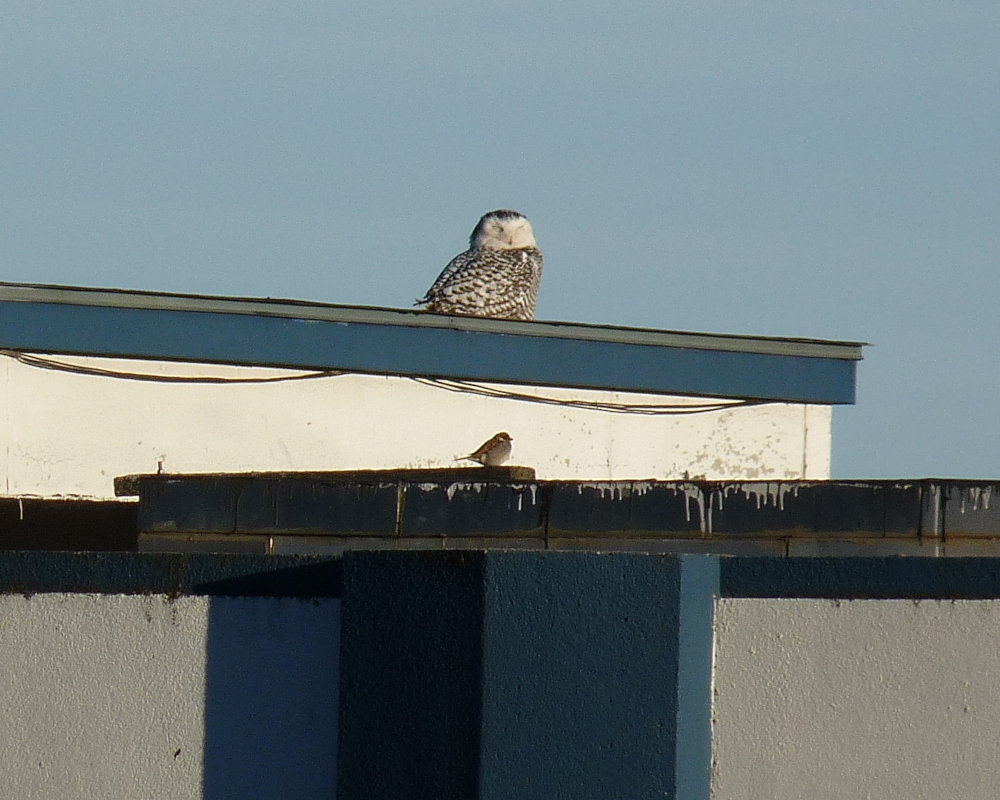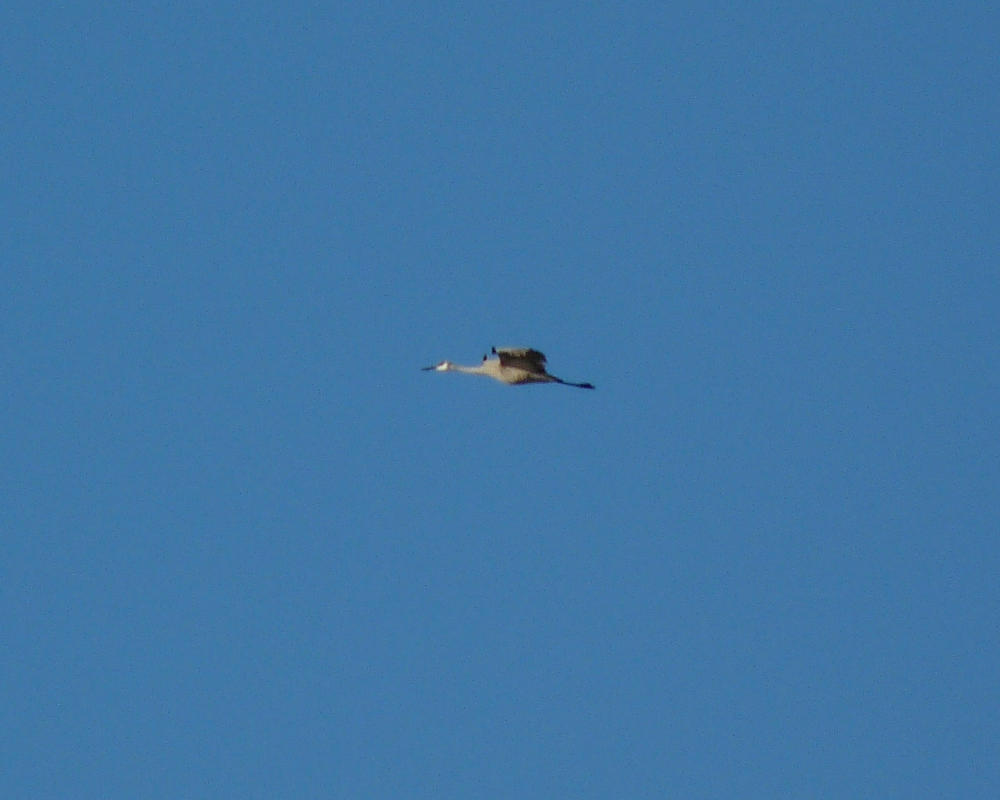A male Red-winged Blackbird surprised me on February 15. It seems a little early for them, but Red-wingeds didn’t (and usually don’t) winter at Montrose, so this bird has to be a migrant. Along with Red-wings, other early spring passerine migrants we should start seeing in the next couple weeks include Horned Larks, Song Sparrows, and Eastern Meadowlarks. Waterfowl diversity will also pick up during this period. Check weather reports for warm fronts and south winds as these are the conditions that bring in spring migrants.
Category Archives: Birding Tips
First of Season White-winged Scoters, February 9, 2022
Chicago area birder David Johnson likes to point out that February is a good month for White-winged Scoters on Lake Michigan. Indeed, the first White-winged Scoters we see at Montrose show up in February. On February 9, a group of three White-wingeds flew north past the Point, the first report of this species at Montrose in 2022. The best way to look for White-winged Scoters at Montrose is to spend time along the immediate lakefront, scanning Lake Michigan for waterfowl on the lake or flying by. Flocks of 20 or more birds are seen on occasion. White-wingeds can also turn up at or just outside the harbor mouth.
2022 Winter Birding Tips
Winter is the slow season at Montrose. You’d be doing well if you saw 20 species in a morning. As such, there are some things to do and birds to look for.
- This is shaping up to be a good winter for Snowy Owls. As of mid January, many have been reported in the Chicago area, and several have been seen at Montrose. The best places to check for Snowies are the beach and Dunes and on the fishing pier, especially after it ices over. Note: Be careful as the paths and sidewalks can be covered in ice. This is especially true of the fishing pier. Sometimes this ice is thin and not easy to see, so-called black ice.
- The fruiting trees are hosting numbers of American Robins and Northern Cardinals. That’s probably all you will see but there’s always a chance a more unusual frugivore will show up, like a Townsend’s Solitaire or Varied Thrush.
- The open waters of Lake Michigan and the harbor are attracting numbers of ducks, mainly Red-breasted and Common Mergansers and Common Goldeneyes, but as long as the water remains open, an unusual duck, loon, or grebe is possible. Don’t forget to check the harbor mouth too.
- Common Redpolls are showing up in big numbers in northeastern Illinois, and several have been seen at Montrose. Good places to look for them are weedy areas, like the Native Planting Area along the southeast corner of the Point.
As always, don’t forget to check the Montrose Point eBird Hotspot for current sightings.
Great Black-backed Gulls
One of the more unusual birds we’ve been seeing this winter are Great Black-backed Gulls. An adult and first cycle bird have been hanging around the beach and nearby Lake Michigan since late 2021. On January 4 I saw the young bird loafing on the public beach (gulls will gather on the beach to look for and eat washed up salmon). Great Black-backed Gulls are uncommon but regular in small numbers in the Chicago area in winter. Ducks and gulls are about the only birding game in town now that serious winter cold has set in.
What’s In a Name?
Lots of birds have alternate or colloquial names, like Big Cranky for Great Blue Heron or Camp Robber for Canada Jay. One colloquial name for Great Black-backed Gull is Coffin Carrier, an allusion to the dark back of adults. Some person, somewhere, came up with this name and it caught on, becoming part of the language and culture of a region. Colloquial names often have color or personality in a way that the standard English names don’t. The name Great Black-backed Gull is literal and descriptive, but Coffin Carrier has a different connotation and shows imagination and creative thinking. Maybe an undertaker in Boston came up with the name.
Snowy Owl, Finally, December 17, 2021
Not unexpected but perhaps a bit tardy, the first of what will hopefully be many Snowy Owls made an appearance at Montrose on December 17. Snowies can show up almost anywhere. In the past we’ve seen them on the fishing pier, on the stardocks inside the harbor, on top of light poles, at the beach and Dunes, and on the light tower at the harbor mouth. As always, please be discreet when viewing and photographing these birds and give them plenty of space.
In the picture, note the photobombing House Sparrow, or is the Snowy photobombing the House Sparrow?
Sandhill Crane, December 13, 2021, Plus a Few Winter Birding Tips
A Sandhill Crane flew over Montrose Harbor on December 13. This is unusual for a couple reasons. Sandhill Cranes are uncommon migrants at Montrose. Their fall migration is usually a few miles west of us, so we miss most of them (see the recent November 22, 2021 Sandhill Cranes post for insight into this). Possible reasons for this scarcity include the intimidating wall of high rises along Lake Shore Drive and the lack of thermal formation over Lake Michigan. Sandhills are thermal seeking and thermal dependent during migration. These rising columns of warm air make flying long distances easier for them. If you’ve ever watched a group of Sandhills in flight you’ve probably noticed them wheeling and gaining altitude, looking for and finding thermals. Sandhills are also highly social birds, so seeing a lone crane is atypical. The Montrose bird looked lost and out of place, like it took a wrong turn and got separated from its friends.
2021/2022 Winter Birding Tips
Winter is the slow season at Montrose. It’s just a fact of life. You could consider yourself lucky and doing well if you saw 20 species there in a morning. As such, there are some things to do and birds to look for.
- This is shaping up to be a good winter for Snowy Owls. Though none have been reported from Montrose yet, several have been seen just to the north and south along Lake Michigan. The best places to check for Snowies are the beach and Dunes and on the fishing pier, especially after it ices over.
- The fruiting trees are hosting numbers of robins and starlings. That’s probably all you will see but there’s always a chance a more unusual frugivore will show up, like a Townsend’s Solitaire or Varied Thrush.
- The open waters of Lake Michigan and the harbor are attracting large numbers of ducks, mainly Red-breasted Mergansers, but as long as the water remains open, an unusual duck, loon, or grebe is possible. Don’t forget to check the harbor mouth too.
- Several expected sparrows have been turning up in the Butterfly Garden, especially towards the north end in the hawthorns. Where groups of common birds gather, something unusual may find its way.
As always, don’t forget to check the Montrose Point eBird Hotspot for current sightings.




